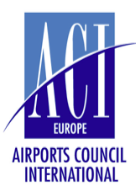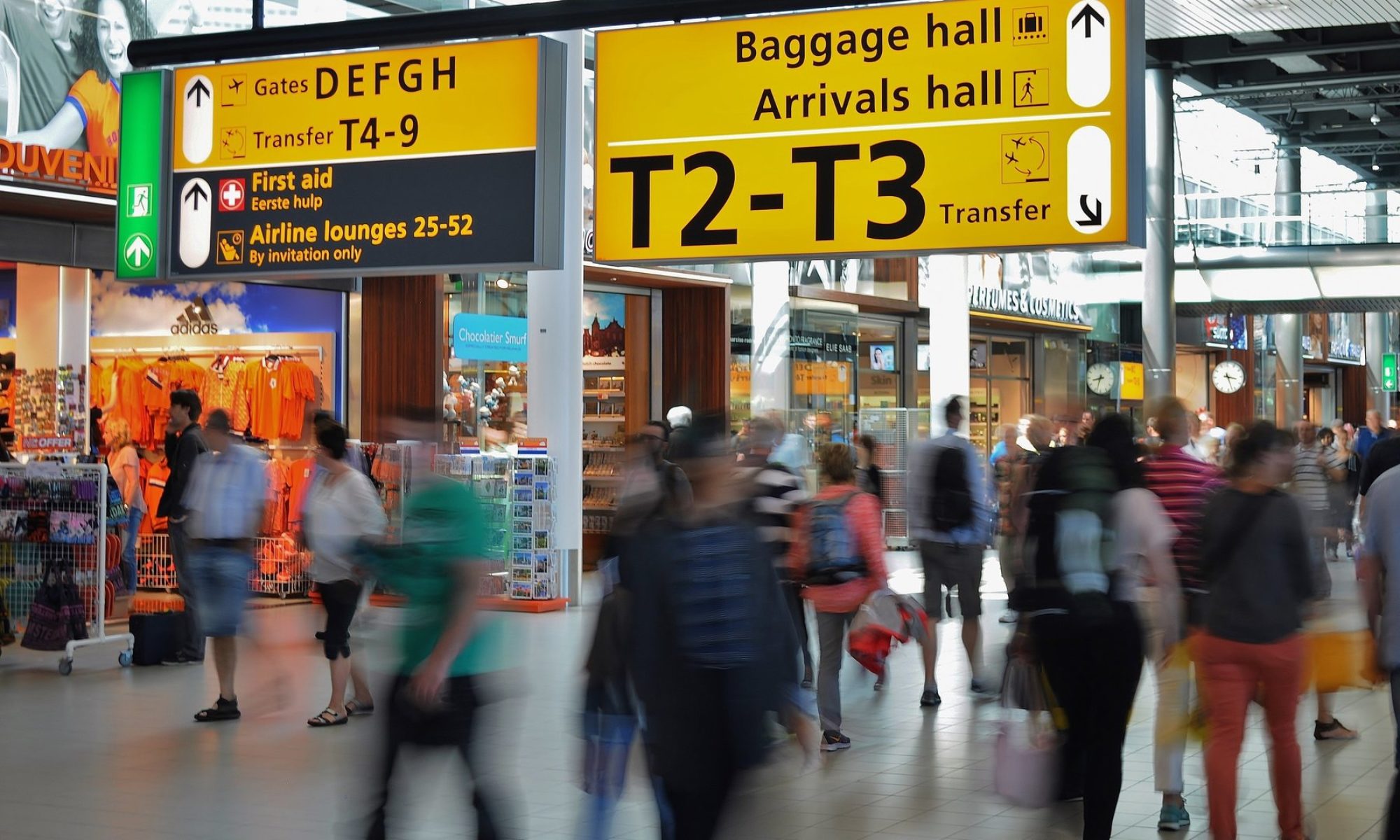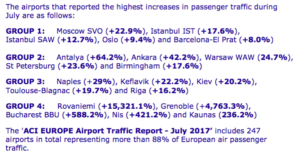 European airport trade association ACI EUROPE today releases its traffic report for April 2018, during which average passenger traffic in geographical Europe grew by +5% compared with the same month last year.
European airport trade association ACI EUROPE today releases its traffic report for April 2018, during which average passenger traffic in geographical Europe grew by +5% compared with the same month last year.
As has occurred in previous months, the non-EU market led the growth dynamic, holding fast at +10.4%, on the back of Turkish airports increasing their passenger traffic by an impressive +13.9%. Gains were especially strong at airports in Georgia (+30.5%), Ukraine (+20.4%) as well as in the smaller markets of FYROM (+17.3%), Montenegro (+15.5%) and Albania (+11.5%).
Meanwhile, passenger traffic growth in the EU market increased by +3.4% – a notable deceleration compared with earlier months (Q1: +6.2%). This was mainly due to the combination of labour disruptions, the continued impact of the bankrupticies of Monarch and Air Berlin, stronger tourism demand to Turkey and Northern Africa impacting some EU leisure airports – as well as the Easter holiday period starting earlier (in March) when compared to last year.
Airports in the Eastern and Southern parts of the bloc along with Finland and Luxembourg significantly outperformed this average. Conversely, airports in the UK, France and Germany posted the weakest results. Accordingly, the following capital city airports all registered double-digit growth in passenger traffic: Tallinn (+32.4%), Bratislava (+26.9%), Ljubljana (+19.4%), Riga (+16.3%), Vilnius (+15.3%), Warsaw (+14.8%), Athens (13.7%), Budapest (+13.6%), Malta (+11.4%), Helsinki (+11.9%) and Luxembourg (+11.7%).
The Majors (top 5 European airports) saw passenger growth weakening to +2.4% compared to +9.6% in Q1. The Air France strikes had an impact on Paris-CDG (-3.5%) – so far, the airport has lost more than 700.000 passengers due to industrial action at the airline. There were also lower passenger numbers at London-Heathrow (-2.2%). Istanbul-Atatürk (+10.7%) kept posting the best performance amongst the league, followed by Frankfurt (+5.8%) and Amsterdam-Schiphol (+3.0%).
Overall, passenger growth was the most dynamic at smaller & regional airports (with less than 5 mppa: +7.6%), with examples including: Batumi (+63.3%), Rostov (+21.3%), Bodrum (+20.7%) and Kristiansund (+12.6%) in the non EU market, as well as Bourgas (+135.9%), Kefallinia (+78.6%), Poznan (+43.1%), Corfou (+38.2%), Ostend (+30.8%), Turku (+26.5%), Clermont- Ferrand (+28.6%), La Rochelle (+21.9%), Memmingerberg (+21.9%), Linz (+20.4%), Wroclaw (+17.2%), Genova (+15.8%) and Paphos (+15.2%) in the EU.
The airports that reported the highest increases in passenger traffic during April 2018 (compared with April 2017) are as follows:
GROUP 1: Antalya AYT (+18.7%), Moscow SVO (+14.8%), Istanbul SAW (+11.7%), Istanbul IST (+10.7%) and Lisbon (+9.1%)
GROUP 2: Ankara (+30.1%), Kiev (+21.8%), Moscow VKO (+19.4%), Warsaw WAW (+14.8%) and Athens (+13.7%)
GROUP 3: Naples (+25.8%), Seville (+22.5%), Krakow (+19.2%), Valencia (+18.7%) and Riga (+16.3%)
GROUP 4: Foggia (+169.7%), Bourgas (+135.9%), Kefallinia (+78.6%), Batumi (+63.3%) and Poznan (+43.1%)




